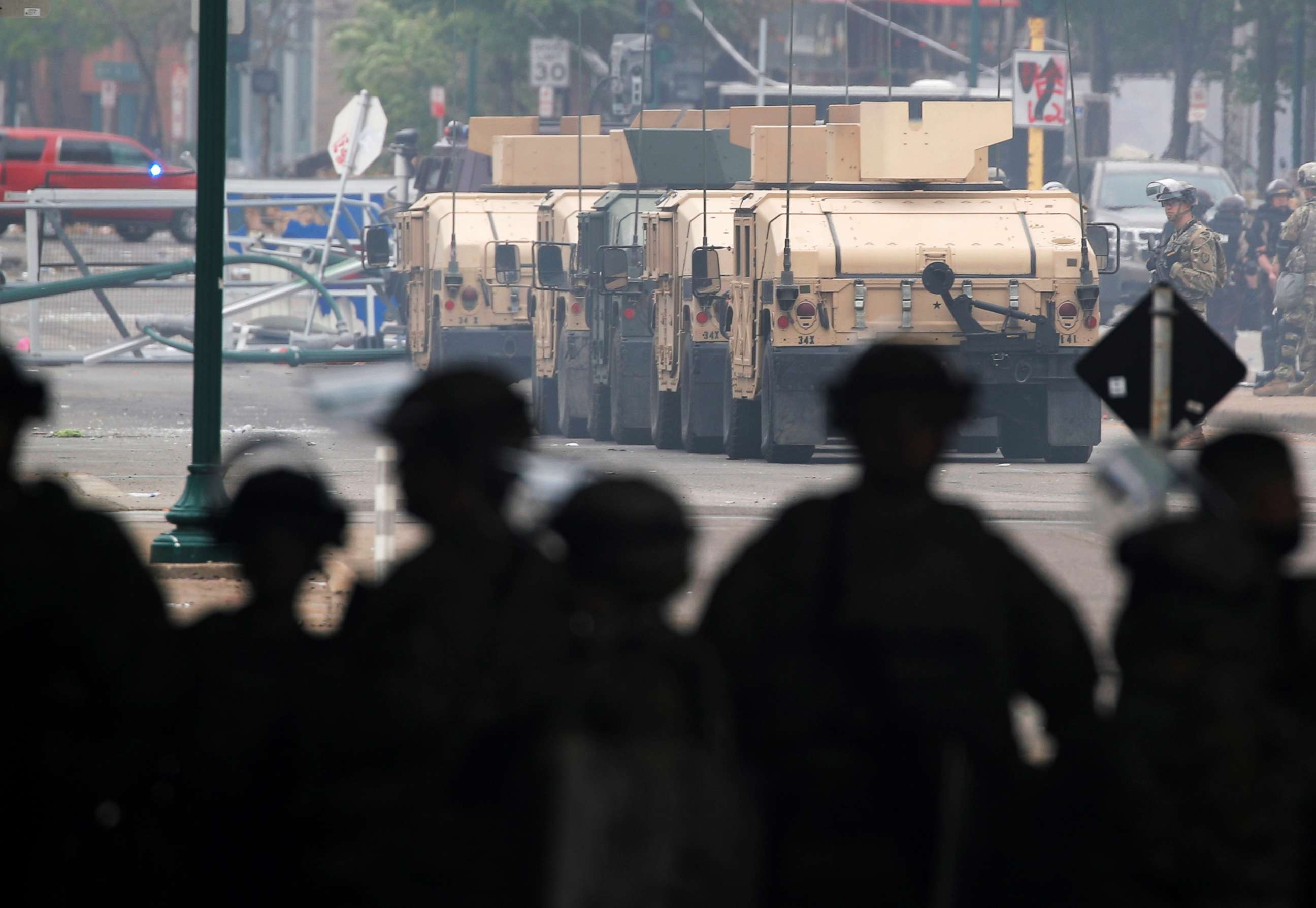Pentagon has troops on 4-hour standby to go to Minneapolis if needed
If troops are requested, they will only provide support to local authorities.
The Pentagon has placed a small number of U.S. Army units on a four-hour standby to deploy to Minneapolis if Minnesota Gov. Tim Walz requests them to help end the violent protests, but so far Walz has indicated he will use only National Guard troops from his state or neighboring states. If the active duty troops are requested, a senior defense official said they will only be providing support to local authorities.
"At this time there is no request by the Governor of Minnesota for Title 10 forces to support the Minnesota National Guard or state law enforcement," said Jonathan Rath Hoffman, the Pentagon's chief spokesman, in a statement. "As a prudent planning measure, the department has directed U.S. Northern Command to increase the alert status of several units should they be requested by the Governor to support Minnesota authorities."
These are units that normally maintain a 48-hour recall to support state civil authorities for several contingencies (like natural disasters) and are now on 4-hour status," said Hoffman.
A senior defense official said that the shortening of response times for all types of missions, including those for civilian support, is not unusual, but did not know when the last time they had been modified in response to civilian disturbances.
Hoffman said Defense Secretary Mark Esper and Gen. Mark Milley, the chairman of the Joint Chiefs of Staff, had spoken twice with Walz over the last 24 hours and had "expressed the department’s readiness to provide support to local and state authorities as requested."
Earlier on Saturday, Walz authorized the full call up of Minnesota's 13,200 guardsmen, however, that is merely an authorization if they are all needed.

For now, the Minnesota National Guard says it plans to have 3,200 guardsmen activated by the end of Saturday and additional personnel will be called up in coming days. Guardsmen are providing support to law enforcement personnel in Minneapolis, but are not authorized to carry out arrests under their rules of engagement.
Walz told reporters on Saturday that he was aware of the Pentagon's planning and called it "an option" that might involve "several hundred" forces. The Minnesota governor clearly stated his preference to use his state's guardsmen and others from neighboring states who could come in greater numbers and have more familiarity with his state.
Since the eruption of violence in Minneapolis, President Donald Trump has tweeted that the U.S. military might be involved, raising questions if he was referring to the use of active duty troops or the federalizing of the Minnesota National Guard.
Active duty military troops are prohibited by the post-Civil War Posse Comitatus Act from carrying out law enforcement duties in the United States. However, the Insurrection Act of 1807 allows the president to send in military troops to end lawlessness. It was used during the 1992 riots in Los Angeles that followed the Rodney King trial acquittal and in 2005 in New Orleans in the aftermath of Hurricane Katrina.
Asked if the Insurrection Act might be invoked, the senior defense official would only say that "the department is prepared to support the governor or any requests that the governor has to deal with the situation currently taking place in Minnesota. That is the extent of what we're looking at."

A U.S. official told ABC News that several military police units at several Army bases, including Fort Drum, New York, and Fort Bragg, North Carolina, were among those placed on prepare to deploy orders in case they are requested by Minnesota's governor.
But the senior defense official said that an engineering unit was also placed on alert status to possibly assist in placing barriers or fencing, if needed.
The senior defense official said planning for a possible active-duty military response was an internal decision and began on Friday ahead of Esper and Milley's call with Walz.
If the active duty forces are requested by Walz they would fall under the U.S. Northern Command.
ABC News' Matt Seyler contributed to this report.




